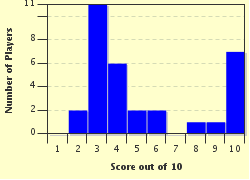Quiz Answer Key and Fun Facts
1. Which class of tram is considered the quintessential Melbourne tram?
2. Melbourne's first modern tram was the Z1 class. They were based on a type of tram from which European city?
3. Melbourne's Z2 class trams are almost completely identical to the Z1 class, except for one minor detail. What is it?
4. The local tram network in Footscray was connected to the main Melbourne network in 1954 with the construction of a new line. Which route number does this line carry today?
5. The last section of single track in Melbourne was located on Truganini Road in the suburb of Carnegie. In what year was it duplicated?
6. Located in the Melbourne suburb of Preston, what is "Mount Buggery", as it is known to tram drivers and enthusiasts?
7. Melbourne's first low-floor tram was the C1 class, otherwise known as the Citadis 202. They were manufactured by which company?
8. The W5 was considered the fastest of the W-class trams, with a balancing speed of around 38 mph (61 kph). To which Melbourne depot were they mostly confined?
9. What is the standard height (in mm) for accessible tram stops in Melbourne?
10. In which year did Melbourne tram ridership peak?
Source: Author
cjli
This quiz was reviewed by FunTrivia editor
stedman before going online.
Any errors found in FunTrivia content are routinely corrected through our feedback system.


